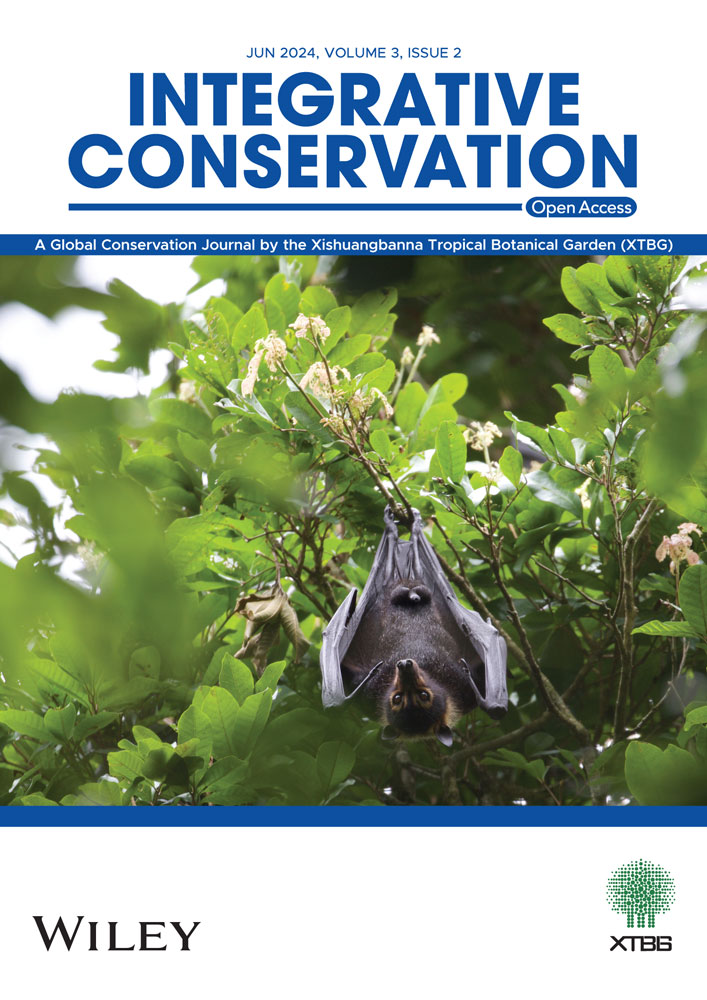Large language models debunk fake and sensational wildlife news
通过大型语言模型揭露虚假和耸人听闻的野生动物新闻
Editor-in-Chief & Handling Editor: Ahimsa Campos-Arceiz
Abstract
enIn the current era of rapid online information growth, distinguishing facts from sensationalized or fake content is a major challenge. Here, we explore the potential of large language models as a tool to fact-check fake news and sensationalized content about animals. We queried the most popular large language models (ChatGPT 3.5 and 4, and Microsoft Bing), asking them to quantify the likelihood of 14 wildlife groups, often portrayed as dangerous or sensationalized, killing humans or livestock. We then compared these scores with the “real” risk obtained from relevant literature and/or expert opinion. We found a positive relationship between the likelihood risk score obtained from large language models and the “real” risk. This indicates the promising potential of large language models in fact-checking information about commonly misrepresented and widely feared animals, including jellyfish, wasps, spiders, vultures, and various large carnivores. Our analysis underscores the crucial role of large language models in dispelling wildlife myths, helping to mitigate human–wildlife conflicts, shaping a more just and harmonious coexistence, and ultimately aiding biological conservation.
摘要
zh在当前网络信息快速增长的时代,区分事实与耸人听闻或虚假的内容是一项重大挑战。本文探讨了大型语言模型作为一种工具在检查关于动物的假新闻和耸人听闻的内容上的潜力。我们对最流行的大型语言模型(ChatGPT 3.5 和 4,以及 Microsoft Bing)进行了查询,要求它们量化 14 种野生动物群体杀害人类或牲畜的可能性,这些动物群体通常被描述为危险的或耸人听闻的。然后,我们将这些分数与从相关文献和/或专家意见中获得的 “真实 “风险进行比较。我们发现,大语言模型得出的可能性风险得分与 “真实 “风险之间存在正相关关系。这表明,大型语言模型在核对有关水母、胡蜂、蜘蛛、秃鹫和各种大型食肉动物等普遍被误传和令人广为恐惧的动物的信息方面具有广阔的潜力。本文的分析结果展现了大型语言模型在消除野生动物流言、帮助缓解人类与野生动物冲突、塑造更加公正和谐的共存关系以及最终助力生物保护方面的关键作用。【审阅:孟义川】
Plain language summary
enIn today's digital age, distinguishing accurate information from misinformation, sensationalized, or fake content is very challenging. We investigated the effectiveness of large language models, such as ChatGPT and Microsoft Bing, in fact-checking fake news about animals. We asked these large language models to evaluate the likelihood of wildlife, often portrayed as dangerous, killing humans or livestock. We selected 14 wildlife groups, including jellyfish, wasps, spiders, vultures, and various large carnivores. The scores from the large language models were then compared to data from scientific literature and expert opinions. We found a clear positive correlation between the risk assessments made by the large language models and real-world data, suggesting that these models may be useful for debunking wildlife myths. For example, the large language models accurately identified that animals like vultures pose no measurable risk to humans or livestock, while some large carnivores are more dangerous to livestock. By accurately identifying the true risks posed by various wildlife species, large language models can help reduce fear and misinformation, thereby promoting a more balanced understanding of human–wildlife interactions. This can aid in mitigating conflicts and ultimately promote harmonious coexistence.
简要语言摘要
zh在当今的数字时代,区分准确的信息与错误的、耸人听闻的或虚假的内容非常具有挑战性。我们研究了大型语言模型(如ChatGPT和Microsoft Bing)在检查关于动物的假新闻方面的有效性。我们选取了通常被描述为危险的,会杀死人类或牲畜的14个野生动物类群,包括水母、胡蜂、蜘蛛、秃鹫和各种大型食肉动物。然后使用这些大型语言模型来评估野生动物对人与牲畜产生伤害的可能性,并将大型语言模型的得分与科学文献和专家意见的数据进行比较。
我们发现大型语言模型的风险评估与现实世界数据之间存在明显的正相关关系,这表明这些模型可能有助于揭开野生动物的流言。例如,大型语言模型准确地识别出像秃鹫这样的动物对人类或牲畜没有可测量的风险,而一些大型食肉动物对牲畜更危险。通过准确识别各种野生动物带来的真实风险,大型语言模型可以帮助人们减少恐惧和错误信息,从而促进对人类与野生动物交互的更平衡的理解。这有助于缓解人与野生动物的冲突,最终促进和谐共处。
Practitioner points
en
-
Large language models, such as ChatGPT and Microsoft Bing, can provide accurate and balanced assessments of the true risks posed by wildlife to humans and livestock.
-
Large language models correctly classified animals that pose no threat to humans and wildlife from others that are more dangerous, aligning well with real-world data.
-
By providing accurate risk assessments, these models can help promote coexistence between humans and wildlife.
实践者要点
zh
-
大型语言模型(ChatGPT和Microsoft Bing)可以准确和均衡地评估野生动物对人类和牲畜造成的真实风险。
-
大型语言模型能够正确分类那些对人类和牲畜不构成威胁的动物与其他更危险的动物,其分类结果与真实世界数据高度吻合。
-
通过提供准确的风险评估,这些模型可以帮助促进人类和野生动物之间的共存。
CONFLICT OF INTEREST STATEMENT
The authors declare no conflict of interest.
Open Research
DATA AVAILABILITY STATEMENT
All scores obtained from the large language model queries are available as supplementary data along with this study.




